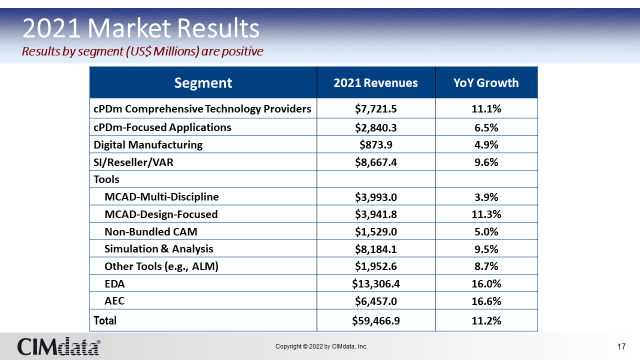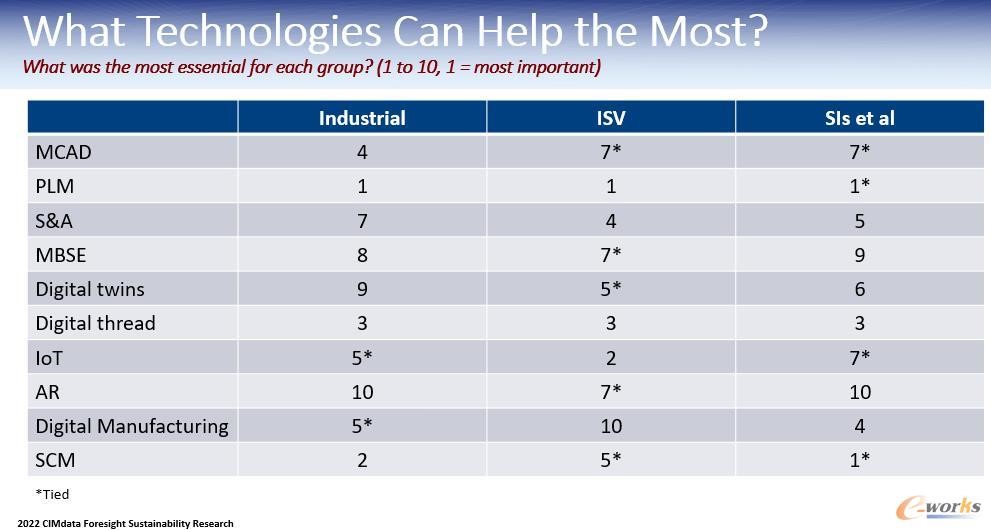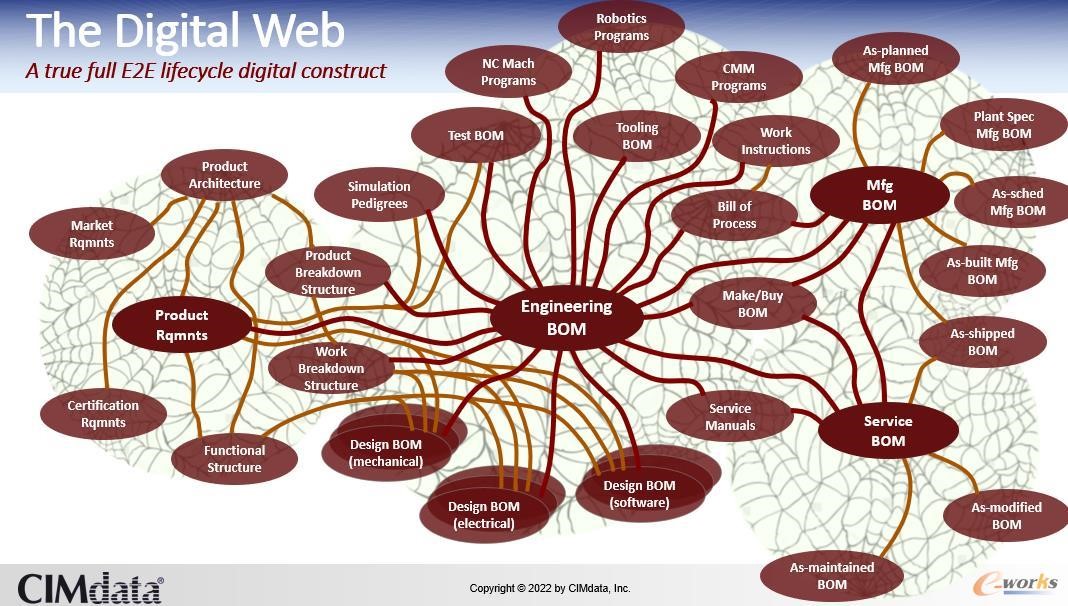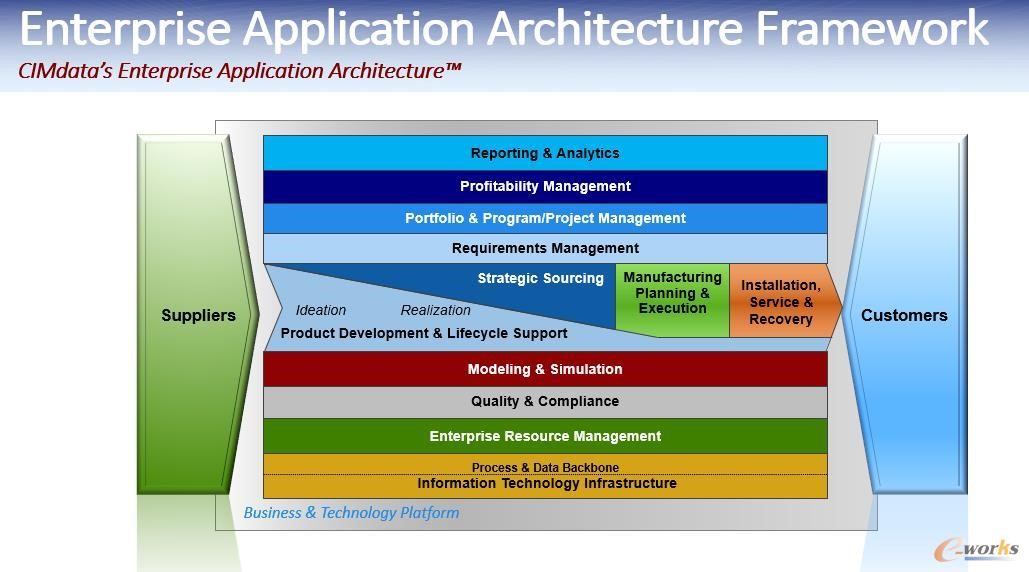CIMdata reports global PLM market up 11.2% in 2021
At the 2022 CIMdata PLM Market & Industry China (Virtual) Forum last Tuesday and Wednesday, CIMdata reported that the overall PLM market was up 11.2% to $59.5 billion in 2021. Focusing on “Sustainability: PLM Essential to Facing this Global Challenge” this year, CIMdata, the leading global PLM strategic management consulting and research firm, discussed the issues faced by the industry, provided insights on the global PLM market, and updated on key topics: Multi-View BOM and Enterprise Application Architecture (EAA).
Double-Digit Growth in PLM Economy
CIMdata estimated that the overall PLM market was up 11.2% to $59.5 billion in 2021, higher than the forecast of 7.5% growth. The cPDm sector reached 19.2 billion US dollars, with an increase of 9.7%. The software market grew steadily while the service market slowed down. Led by significant EDA software growth, the tools sector increased by 12.1% to 39.4 billion US dollars.
CIMdata estimated that the overall PLM market was up 11.2% to $59.5 billion in 2021, higher than the forecast of 7.5% growth. The cPDm sector reached 19.2 billion US dollars, with an increase of 9.7%. The software market grew steadily while the service market slowed down. Led by significant EDA software growth, the tools sector increased by 12.1% to 39.4 billion US dollars.

The latest PLM status & trends survey of CIMdata revealed that companies continue to find PLM worth investing in for the most part, with an emphasis on getting faster, better, and cheaper. Meanwhile, enterprise systems confusion still exists, as well as culture and practice differences. And management disconnect is believed to be widespread. Peter Bilello, President and CEO of CIMdata, commented that PLM appears to have gained momentum in 2022.
In 2021, service revenue accounted for 55.3% of the overall cPDm market, mostly driven by independent service providers. Among comprehensive cPDm providers, software revenue was 72.3%, and services revenue was 27.7%. While in 2020, software revenue was 70.8% and services revenue was 29.2%.
Stan Przybylinski, Vice President, explained that services ratio could change for several reasons: PLM solution providers keep developing products, packaging, and delivery bundles to reduce services; Cloud-based products often claim to require fewer services; the nature of services is changing -there is more need for skills in advanced PLM topics than IT installation and integration.
In 2021, there were 15 cPDm software and service providers with revenues of more than US $400 million, up one from 2020. Overall, most of the PLM segments are recovering from the impact of COVID-19.
Another significant trend in PLM is “continued movement towards subscription”. For example, Autodesk and PTC have completed the transition. Other manufacturers, such as Siemens Digital Industries Software, are still in the early stages.
A total of 197 mergers and acquisitions were completed in the PLM field in 2021, compared with 102 in 2020 and 109 in 2019. It shows that mergers and acquisitions have not slowed down due to the epidemic and will “continue to play a role”.
The Sustainability Imperative
As environmental degradation escalates, a systemic solution is needed to address the problems brought by the crisis. CIMdata believes that sustainability has become imperative, and the PLM economy is central to a systemic response, which must consider people, process, and technology.
Concerning sustainability objectives, CIMdata conducted a survey on industrial companies. It implies that sustainability requirements are being “driven top-down into companies”. And most survey respondents need help in most aspects of their sustainability programs—strategy, processes, and tools all have significant gaps, which indicates providing tools and support has immense opportunities for solution providers.
The survey shows that PLM, supply chain and digital thread are recognized as essential capabilities to enable sustainability programs. Advanced capabilities such as Digital Twin, MBSE, and S&A are seen as important and somewhat crucial.
In addition to industrial companies, CIMdata also surveyed ISVs and SI/Reseller/VARs on the matter of sustainability. When asked "What Technologies Can Help the Most?", all three groups placed PLM in the first place. SCM and digital thread followed.

Stan Przybylinski commented: “Sustainability demands a systemic approach and needs to be supported by a business platform and robust digital thread. While PLM or SCM, like the chicken and egg, must be more symbiotic, enabling continuous improvement.”
On balance, sustainability is an existential challenge that also offers big business opportunities. “Industrial companies, ISVs, and SI/Reseller/VARs must join efforts to succeed”.
Digital Web and Multi-View BOM Value Potential
Between the four principal product structure configurations (product requirements, engineering BOM, manufacturing BOM, service BOM), CIMdata gained the insight that there are not only linear connections by product life cycle sequence, but also connections of “derivative dependencies”, in the form of a web, which is called the Digital Web.

CIMdata believes that the multi-view approach for implementation of eBOM, mBOM and related product lifecycle structures, is core to the concept of Digital Thread.
Peter Bilello compared single BOM, dual BOM and multi-view approaches and pointed out that the multi-view approach can eliminate time and effort for reconciliation and synchronization of eBOM, mBOM and sBOM, reduce cost and quality issues due to inaccurate data, eliminate time and effort to validate data which is not trusted, and increase in efficiency and quality of supplier collaboration as well as production resulting from timely processing of manufacturing requested changes.
With recent advances in PLM technology, enablement of the multi-view approach has become technically possible, including for industries producing complex products, such as automotive, aerospace and high tech.
“The establishment of multi-view BOM methods within any industrial company, large or small, is a major transformation of processes, roles and enabling technology for them. For technology and/or service providers with the right engagement model and capabilities to assist with such transformations, the opportunities to deliver value and reap financial rewards are substantial.” Said Peter Bilello.
Enterprise Application Architecture
Peter Bilello also analyzed the enterprise application architecture (EAA) proposed by CIMdata. He emphasized that PLM isn't implemented as a single IT system but rather a set of solutions that enable a wide range of capabilities that must work together. And thus, ET, IT & OT technology convergence is required, which enables more direct control and complete monitoring, with easier analysis of data from these complex systems.
CIMdata's Enterprise Application Architecture (EAA) describes a comprehensive Enterprise Application Architecture framework. Such a framework can be used to help assess current application environments, define implementation roadmaps, as well as guide implementations.
Peter Bilello explained, "the model was initially developed because of the significant disconnect we have seen in organizations' architecture, as well as the incomplete and/or the lack of understanding concerning the role PLM plays in an enterprise architecture."

EAA can be applied to discrete, process and non-manufacturing industries. It can not only enable diagnostics but also help with model selection, for example, sorting out relevant problems, demands and objectives in the process of PLM selection to assist model construction, gap analysis, etc.
CIMdata's EAA is composed of 12 application areas, covering 32 specific focus areas, which can be further subdivided into 290 capabilities. Peter Bilello expressed CIMdata's willingness to partner with the broader PLM economy to continue to build out the framework for the betterment of all.








